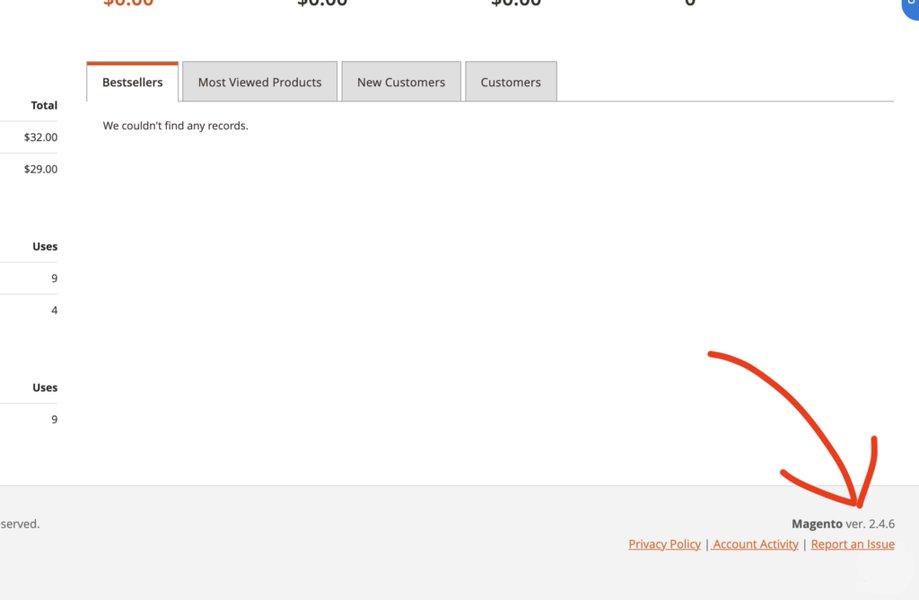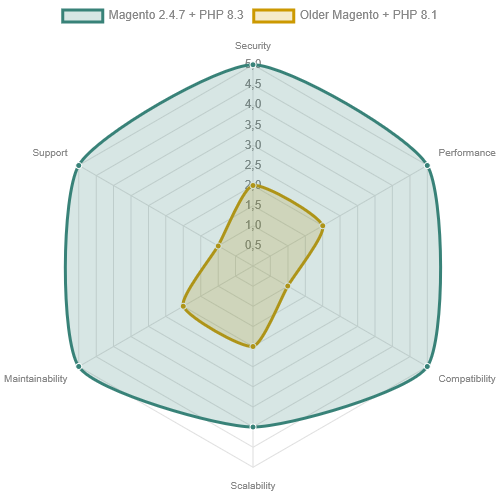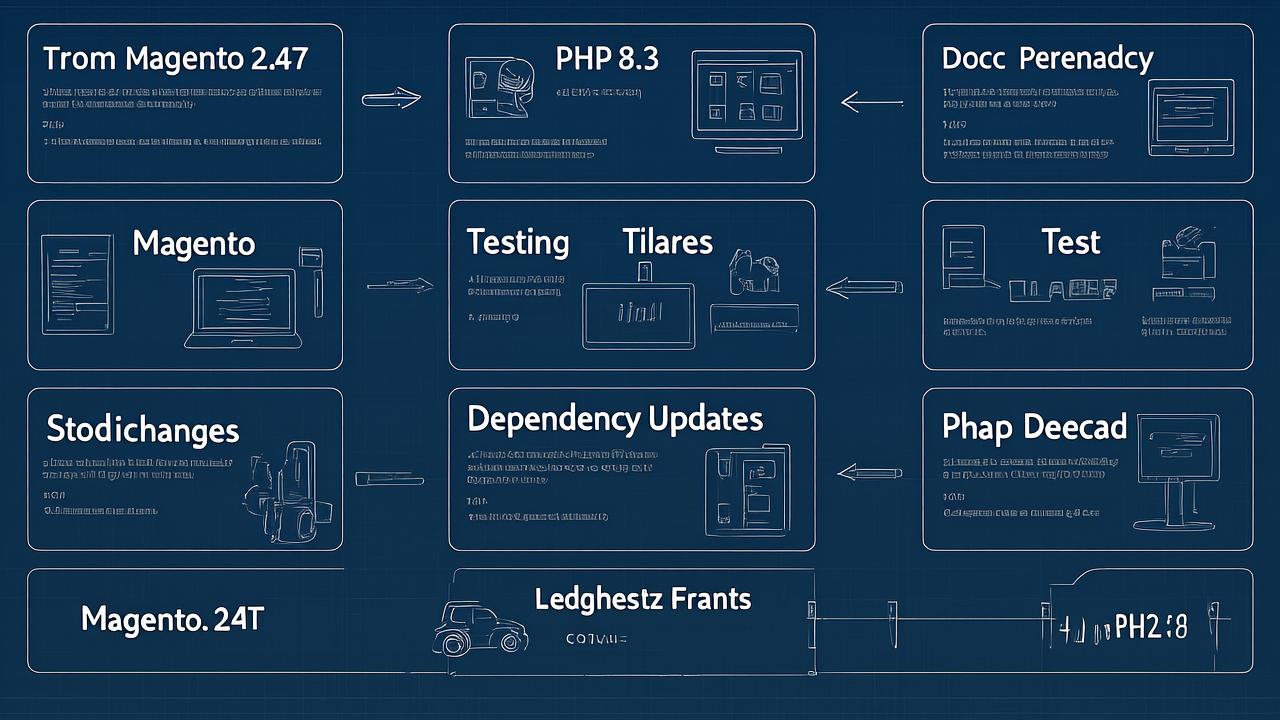Navigate the complexities of your Magento upgrade with confidence, ensuring enhanced security, blistering performance, and future-proof compatibility.
Upgrading your Magento store to version 2.4.7 with PHP 8.3 is a critical step for merchants aiming to leverage the latest in e-commerce technology. This significant update brings a host of benefits, including enhanced security, substantial performance improvements, and long-term compatibility, which are essential for maintaining a competitive edge in the fast-evolving digital landscape. PHP 8.3, as the recommended version for Magento 2.4.7, offers superior memory management and execution speeds, translating directly into faster page loads and a more fluid user experience. This comprehensive guide outlines a strategic 12-point checklist to ensure a seamless and successful transition, minimizing disruptions and maximizing the advantages of these powerful platform enhancements.
Key Insights for a Seamless Magento 2.4.7 Upgrade
- Strategic Planning is Paramount: A detailed plan encompassing backups, environment setup, and compatibility assessments is crucial before initiating the upgrade process.
- PHP 8.3: The Future-Proof Foundation: Magento 2.4.7 fully supports PHP 8.3, offering significant performance and security benefits, with a mandatory migration deadline for PHP 8.2 users by December 2025.
- Thorough Testing is Non-Negotiable: Comprehensive testing in a dedicated staging environment, covering all functionalities and third-party integrations, is vital to prevent post-upgrade issues in production.

A clear view of the Magento Admin Interface, representing the core environment for upgrade management.
Understanding the Imperative for Upgrading
The decision to upgrade to Magento 2.4.7 with PHP 8.3 is driven by compelling reasons centered on security, performance, and future-proofing your e-commerce operations. Older versions of Magento and unsupported PHP environments are increasingly vulnerable to security breaches and lack critical updates, putting your business and customer data at risk. PHP 8.3, specifically, introduces significant architectural enhancements that optimize resource consumption and code execution, leading to a noticeable improvement in site speed and responsiveness. This upgrade not only safeguards your store but also positions it to handle increased traffic and complex operations more efficiently.
Enhanced Security Posture
Magento 2.4.7 bundles critical security fixes and introduces features like rate limiting for payment APIs to mitigate carding attacks. Coupled with PHP 8.3’s robust security features and ongoing support, your store gains a stronger defense against emerging threats. The removal of deprecated functions and the introduction of new language features in PHP 8.3 also help in writing more secure and maintainable code, reducing potential attack vectors.
Unleashing Performance Gains
PHP 8.3 brings substantial performance improvements, which translate directly into faster page load times and a more fluid user experience. These enhancements contribute to better SEO rankings, lower bounce rates, and increased conversion rates. Magento 2.4.7 further complements this with GraphQL improvements and optimized caching mechanisms, allowing for faster API responses and overall improved system efficiency.
Future-Proofing Your E-commerce Platform
Remaining on an unsupported version of Magento or PHP risks incompatibility with future extensions, payment gateways, and essential services. With PHP 8.2 reaching its End of Service (EOS) in December 2025, migrating to PHP 8.3 with Magento 2.4.7 ensures your platform remains compliant, supported, and ready for future innovations. This forward-looking approach secures your investment and provides a stable foundation for growth.
Your Comprehensive 12-Point Upgrade Checklist
A systematic approach is essential for a successful Magento 2.4.7 and PHP 8.3 upgrade. This detailed 12-point checklist covers every critical aspect, from initial planning to post-go-live monitoring, ensuring a smooth and efficient transition.
1. Strategic Planning and Environment Assessment
Before any technical work begins, conduct a thorough assessment of your current Magento setup. This includes identifying your current Magento version, installed third-party extensions, custom code, and existing server configurations (PHP, database, web server). Develop a detailed upgrade plan that outlines timelines, resource allocation, and potential risks. This foundational step helps in anticipating compatibility challenges with PHP 8.3 and Magento 2.4.7.
2. Complete Data and File Backup
This is arguably the most critical step. Create a full and verifiable backup of your entire Magento installation, including all files, folders, and the database. This backup serves as a safety net, allowing for a quick rollback in case of unforeseen issues during the upgrade process. Store these backups securely in an off-site location.
3. Establish a Dedicated Staging Environment
Never perform an upgrade directly on your live production store. Set up a separate staging or development environment that precisely mirrors your production server’s specifications, including PHP 8.3. This isolated environment provides a safe space to test the upgrade, identify, and resolve any issues without impacting live operations.
4. Verify and Update System Requirements
Ensure your server infrastructure meets the updated system requirements for Magento 2.4.7 and PHP 8.3. This includes confirming the correct PHP version, required PHP extensions (e.g., bcmath, gd, exif), database versions (MySQL 8.0 or MariaDB 10.6+), and web server configurations (Apache or NGINX). Adjust PHP settings such as memory_limit (at least 2G) and max_execution_time as recommended.
5. Update Composer and Core Dependencies
Update your Composer installation to version 2.6.x or newer. Then, use Composer to manage the Magento core upgrade and update all project dependencies. This command will pull the new Magento 2.4.7 core files and ensure that all third-party libraries like TinyMCE, RequireJS, and Monolog are compatible with PHP 8.3.
composer self-update
composer clear-cache
composer require magento/product-community-edition=2.4.7 --no-update
composer update6. Assess and Migrate Third-Party Extensions and Custom Code
Review every installed third-party extension and custom code for compatibility with Magento 2.4.7 and PHP 8.3. Many older extensions may not function correctly with PHP 8.3 due to deprecated functions or structural changes. Contact vendors for updated versions, or seek developer assistance to refactor custom code to comply with PHP 8.3 standards. Tools like PHPCompatibility and PHPStan can help scan your codebase for issues.
7. Upgrade Magento Database Schema and Data
After updating the files, execute Magento’s setup upgrade command to update the database schema and data to align with the 2.4.7 version. This is crucial for integrating new features and ensuring data integrity. During this step, any database-related changes introduced in the new Magento version are applied.
php bin/magento setup:upgrade8. Comprehensive Functional and Performance Testing
In your staging environment, conduct exhaustive functional testing. This includes all aspects of the storefront (product browsing, adding to cart, checkout flow, payment gateways, user accounts) and the admin panel. Additionally, perform performance testing to evaluate page load times, resource consumption, and overall site stability under various load conditions. Identify and fix any regressions or performance bottlenecks.
9. Clear Caches and Reindex Data
After the upgrade and testing, ensure all caches are thoroughly cleared (both Magento and external caches like Varnish or Redis). Reindex all Magento data to ensure product prices, stock levels, and search indexes are accurate and up-to-date.
php bin/magento cache:clean
php bin/magento cache:flush
php bin/magento indexer:reindex10. Security and Compliance Audit
Post-upgrade, conduct a security audit to confirm that all security settings are correctly configured. This includes verifying rate-limiting for APIs, checking SSL certificate validity, and reviewing payment security configurations. Ensure compliance with relevant data protection regulations.
11. Go-Live Preparation and Final Checks
Once satisfied with the staging environment’s performance and stability, prepare for the production deployment. This involves putting the store in maintenance mode, transferring the upgraded codebase, running final database updates, and re-enabling the store during a low-traffic window. Conduct a final round of checks on the live site immediately after deployment.
12. Post-Upgrade Monitoring and Ongoing Maintenance
After going live, continuously monitor your site for any performance degradation, errors, or security issues. Keep an eye on server logs, user feedback, and key performance indicators. Establish a routine for ongoing maintenance, applying security patches, and keeping your system updated to leverage the long-term benefits of PHP 8.3.

The radar chart above visually compares the strengths of Magento 2.4.7 with PHP 8.3 against an older Magento setup with PHP 8.1 across several key metrics: Security, Performance, Compatibility, Scalability, Maintainability, and Support. It clearly illustrates the significant advantages gained by upgrading, showing a much higher rating for the updated environment in all crucial aspects, underscoring the critical need for this upgrade.

This bar chart highlights specific benefits merchants can expect from upgrading to PHP 8.3 with Magento 2.4.7, rated on a scale of 0 to 10. It showcases how the upgrade contributes to reduced vulnerabilities, faster page loads, improved developer efficiency, robust future-proofing, and potential long-term cost savings through optimized resource utilization and reduced maintenance overhead.
Understanding Magento 2.4.7 & PHP 8.3 Compatibility
Magento 2.4.7 marks a pivotal release due to its full compatibility with PHP 8.3, providing a robust and performant foundation for e-commerce operations. This compatibility is not merely about supporting a newer PHP version; it’s about embracing a significant leap in language capabilities that directly benefits Magento’s architecture and overall ecosystem.
PHP 8.3: A Deeper Dive into Benefits
PHP 8.3 introduces several key enhancements, including improved error handling, better memory management, and new language features like the #[Override] attribute. These features contribute to a more stable, efficient, and secure codebase. For Magento, this translates into faster execution of complex operations, reduced server load, and an overall snappier user experience. Merchants should be aware that while PHP 8.2 is supported for upgrade paths to 2.4.7, PHP 8.1 is no longer officially supported for ongoing use, making the move to 8.3 a strategic necessity.
Key Updates within Magento 2.4.7
Beyond PHP 8.3 compatibility, Magento 2.4.7 itself brings significant improvements:
- GraphQL Enhancements: Expanded GraphQL coverage and new resolver caches improve API performance, crucial for headless commerce architectures.
- Payment Security: Enhanced security for payment information transmitted via REST APIs, including rate limiting to prevent carding attacks.
- Shipping API Migrations: Transition from older APIs (like UPS XML) to newer, more secure REST APIs (e.g., UPS REST API), and the removal of the Temando shipping option.
- Frontend Dependencies: Updates to critical frontend libraries such as Require.js (2.3.7) and TinyMCE (7.3.0), ensuring modern web standards and security.
- Database Compatibility: Improved compatibility with MariaDB 10.5.1+ and explicit handling for MySQL 8.4’s
restrict_fk_on_non_standard_keysetting.
Magento 2.4.7 + PHP 8.3UpgradeStrategic PlanningEnvironment AssessmentTimeline & ResourcesPre-Upgrade EssentialsComplete BackupDedicated StagingEnvironmentSystem RequirementsCheckPHP 8.3 SupportDatabase VersionsRequired PHP ExtensionsCore Upgrade ProcessUpdate Composer &DependenciesUpgrade Database SchemaCompatibility &CustomizationThird-Party Extensions &ThemesVendor UpdatesRefactor Custom CodeCode Compatibility ToolsPHPCompatibilityPHPStanRigorous Testing PhaseFunctional TestingCheckout FlowPayment GatewaysAdmin Panel FunctionalityPerformance BenchmarkingSecurity & ComplianceReviewPost-Upgrade ActionsClear Cache & ReindexGo-Live PreparationOngoing Monitoring &MaintenanceServer LogsCustomer Feedback
This mindmap illustrates the comprehensive process of upgrading to Magento 2.4.7 with PHP 8.3, breaking down the complex procedure into manageable, interconnected stages. From initial planning and pre-upgrade essentials to core process, compatibility checks, rigorous testing, and crucial post-upgrade actions, it provides a holistic overview, emphasizing critical checkpoints like environment setup, code refactoring, and continuous monitoring to ensure a successful and stable transition.
Essential Considerations for a Smooth Transition
While the checklist provides a structured path, several nuances and specific technical considerations can further ensure a smooth upgrade. Addressing these proactively can prevent common pitfalls and significantly reduce post-upgrade issues.
Managing Customizations and Extensions
Customizations and third-party extensions are often the most challenging aspects of a Magento upgrade. It’s crucial to document all modifications and perform thorough compatibility checks. For any incompatible extensions, explore updated versions from vendors or consider alternative solutions. If custom code is present, it must be audited for PHP 8.3 compatibility, specifically looking for deprecated functions or syntax changes.
Leveraging Automation and Tools
Utilize tools such as the Magento Upgrade Compatibility Tool (UCT) to analyze your codebase for compatibility issues before starting the upgrade. While not a magic bullet, these tools can highlight potential problems, such as deprecated code, making the refactoring process more efficient. Automating tasks like backups and deployments in the staging environment can also streamline the process.
Database Specifics and Optimizations
Pay close attention to database compatibility, especially if you are running older versions of MariaDB or MySQL. Magento 2.4.7’s enhanced compatibility with specific database settings requires verification. Additionally, consider database optimization techniques post-upgrade to ensure optimal performance, such as reviewing indexing strategies and query performance.
Video Guide: What’s New in Magento 2.4.7
For a visual overview of the new features and enhancements in Magento 2.4.7, including its significant PHP 8.3 support, this video provides valuable insights. It helps merchants understand the strategic advantages they gain by moving to the latest version of the platform.
This video provides a concise overview of the key features and enhancements introduced in Magento 2.4.7. It’s particularly relevant as it covers the crucial topic of PHP 8.3 support, which is a cornerstone of this upgrade guide. Watching this video can help visualize the benefits discussed and reinforce the importance of the technical steps outlined in the checklist.
Comparative Overview of Upgrade Phases
The table below provides a structured comparison of different phases of the Magento 2.4.7 upgrade, highlighting key activities and their importance. This overview helps in understanding the scope and depth of each stage.
| Upgrade Phase | Key Activities | Importance |
|---|---|---|
| Pre-Upgrade Planning | Environment assessment, backup, staging setup, system requirements check | Foundation for a risk-free and efficient upgrade process. Prevents data loss and identifies incompatibilities early. |
| Core System Update | Composer updates, Magento core files upgrade, database schema migration | Integrates the new Magento 2.4.7 version and PHP 8.3, updating core functionalities and data structures. |
| Compatibility & Refactoring | Extension/theme review, custom code audit, PHP 8.3 compliance fixes | Ensures all storefront and backend functionalities work seamlessly with the new PHP version and Magento core. |
| Testing & Validation | Functional testing, performance testing, security audits | Verifies the stability, speed, and security of the upgraded store before live deployment. Catches bugs pre-production. |
| Deployment & Monitoring | Go-live preparation, cache clearing, reindexing, post-launch monitoring | Smooth transition to production, ensuring optimal performance and rapid issue resolution. |
Frequently Asked Questions (FAQ)
What are the primary benefits of upgrading to Magento 2.4.7 with PHP 8.3?
Is PHP 8.3 mandatory for Magento 2.4.7?
How important is a staging environment for the upgrade process?
What are the biggest challenges during a Magento upgrade to 2.4.7?
How long does a Magento 2.4.7 upgrade typically take?
Conclusion
Upgrading your Magento store to version 2.4.7 with PHP 8.3 is a strategic imperative for any merchant committed to securing, optimizing, and future-proofing their e-commerce platform. By diligently following this 12-point checklist, you can navigate the complexities of the upgrade process with confidence, ensuring a smooth transition that minimizes disruption and unlocks the full potential of these powerful enhancements. The benefits—ranging from enhanced security and superior performance to long-term compatibility and reduced operational risks—far outweigh the effort. Embrace this upgrade as an investment in your store’s stability, efficiency, and continued success in the dynamic world of online retail.
Table of Contents
Referenced Search Results
experienceleague.adobe.com
Magento Open Source 2.4.7 release notes | Adobe Commerce
experienceleague.adobe.com
Adobe Commerce System Requirements – Adobe Experience League
github.com
Magento 2.4.7 Admin Dashboard Graph Displays Too Small – GitHub
experienceleague.adobe.com
Adobe Commerce upgrade 2.4.3, 2.3.7-p1 PHP Fatal error Hotfix | …
experienceleague.adobe.com
Magento Open Source 2.4.4 release notes | Adobe Commerce
experienceleague.adobe.com
Adobe Commerce 2.4.8 release notes | Adobe Commerce
magento.stackexchange.com
magento2.4.6 – How to upgrade Magento from 2.4.6 to 2.4.7-beta …
experienceleague.adobe.com

uvaojg